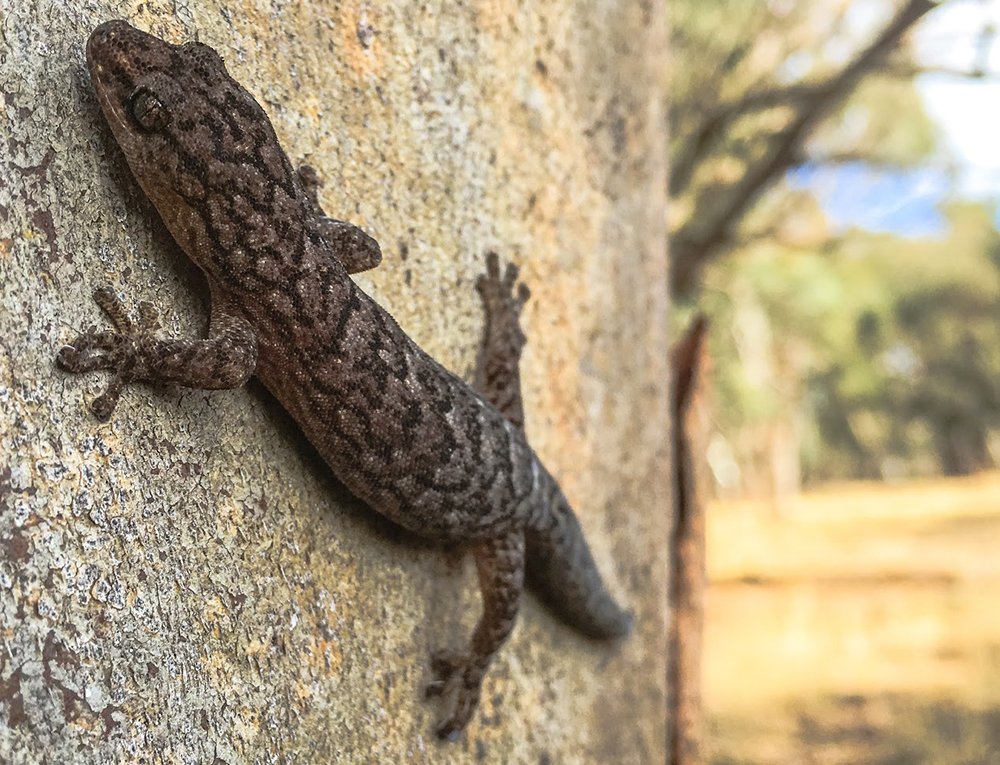Glowing geckos show farmers the way to protecting biodiversity

SCIENTISTS FROM THE Australian National University in Canberra are helping to improve biodiversity on farms by tracking glow-in-the-dark geckos.
For the study, tree-dwelling marbled geckos (Christinus marmoratus) were dusted with fluorescent powder and released into fields. Their glow-in-the-dark trails were later used to track their movements, to see if they’d been influenced by the specific characteristics of the landscape.
“Agricultural landscapes are highly fragmented, and are increasingly expanding to meet our rising global food demand,” said Geoffrey Kay, a reptile expert at ANU who led the research.
“Yet we know very little about how species navigate and move within these fragmented agricultural landscapes,” he said.

Tree-dwelling marbled geckos, pictured, were used in the study. (Image: Geoff Kay)
The study – published in the journal Agriculture, Ecosystems & Environment – found small geckos navigate by using certain visual cues to find their way, and that simple changes in landscape management such as leaving isolated trees in place and planning the direction of crops, can greatly benefit biodiversity. Even the dimensions of fields were shown to be significant.
“Short pastures allowed their movement directly towards trees, [while] movements were significantly affected by crop sowing direction, with individuals following the planted lines,” explained Geoffrey.
“Directional sowing of crops between habitat patches presents a simple but potentially effective tool for reconnecting fragmented landscapes, he said, adding, “Our work also shows that [isolated trees] are useful as visual flagpoles for native fauna navigating across the countryside.”
Dr Saul Cunningham, an expert in managing farming landscapes for biodiversity at ANU (and who wasn’t involved in this particular study), said the findings could help with maintaining the populations of numerous species.
“Many native species are now living in remnant patches in an agricultural landscape. Understanding how these animals navigate the landscape will help landholders manage the landscape to encourage dispersal,” he said.
With more than 70 per cent of Australia under private ownership, designing conservation initiatives at minimal cost to agriculture production will be key, said Geoffrey, who suggested incentivising best-practice to protect biodiversity.
“I propose we pay farmers who undertake directional cropping: that is, pointing the tractor to run directly between habitats to allow better connectivity for reptiles,” he said.
READ MORE:
- Colourful ancient gecko discovered in Central Australia
- Wildlife to be leased to private land owners in bid to save threatened species
- Hunting, fishing and farming remain biggest threats to wildlife




